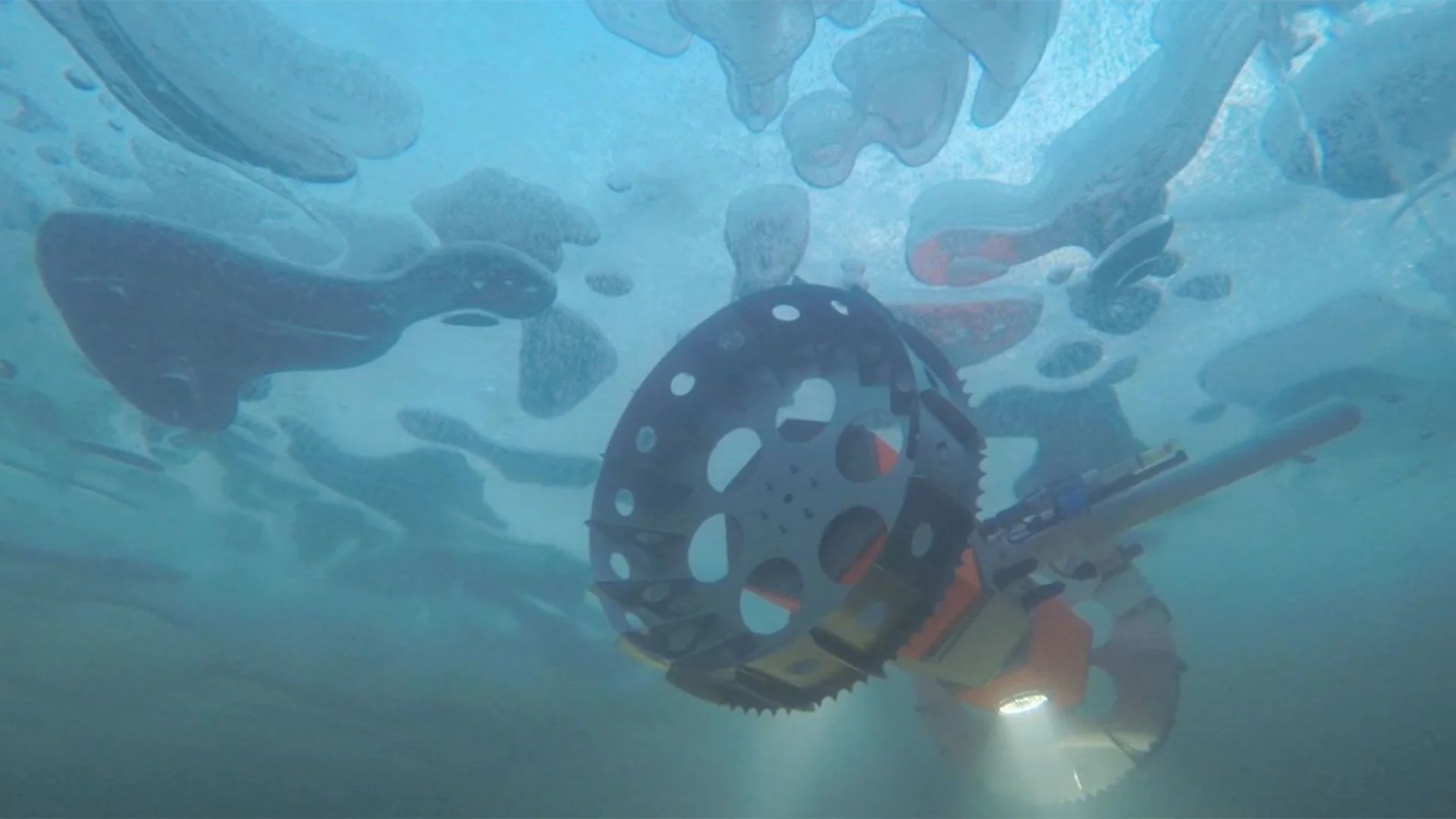NASA is making significant strides in space exploration with the development of advanced robotic systems designed to explore the “ocean worlds” of Europa and Enceladus. These moons, with their icy surfaces and potential subsurface oceans, are considered some of the most promising locations in the solar system to search for signs of extraterrestrial life.
To prepare for missions to these distant moons, NASA has introduced two innovative projects: the Ocean Worlds Lander Autonomy Testbed (OWLAT) and the Ocean Worlds Autonomy Testbed for Exploration, Research, and Simulation (OceanWATERS). These initiatives aim to equip robotic missions with the necessary tools and autonomous capabilities to thrive in extreme environments.
The OWLAT platform, developed at NASA’s Jet Propulsion Laboratory, is a physical testing environment designed to simulate the conditions of low-gravity and icy surfaces. It features a robotic arm, sensors, and interchangeable tools for sample collection, along with autonomy software that allows the robotic systems to operate autonomously in the absence of human oversight. The testbed is crucial for refining lander hardware and software, ensuring they can function efficiently in extraterrestrial conditions.
Meanwhile, OceanWATERS, created at NASA’s Ames Research Center, offers a virtual environment that simulates Europa-like terrain. This simulation platform helps researchers refine algorithms for autonomous decision-making, sample collection, and energy management. It also includes fault-injection capabilities to test the system’s response to potential failures — an essential feature for missions operating far from Earth with significant communication delays.
These efforts are part of NASA’s larger research initiatives, including the Autonomous Robotics Research for Ocean Worlds (ARROW) and Concepts for Ocean Worlds Life Detection Technology (COLDTech) programs. The research is being conducted in collaboration with industry partners like Lockheed Martin and the University of Illinois, focusing on developing algorithms for terrain adaptation and fault detection.
The advancements with OWLAT and OceanWATERS are a major step toward autonomous exploration of Europa and Enceladus. By testing robotic systems in simulated conditions, NASA is preparing for future missions to probe the icy surfaces of these moons, increasing the potential for uncovering extraterrestrial life.
With each new development, NASA moves closer to making the dream of discovering life beyond Earth a reality. The exploration of Europa and Enceladus could unlock new insights into the potential for life elsewhere in the universe.









